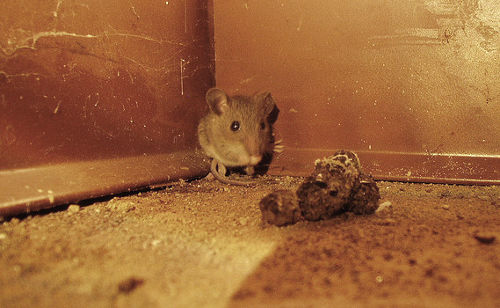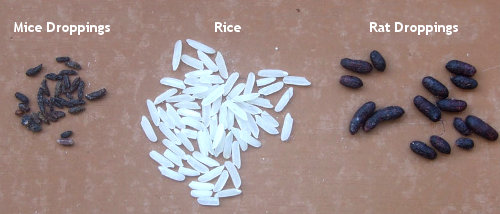
020 3404 5177

Hunters and trackers study the dropping of their target, so they can catch them. It only makes sense, that when it comes to pest control, the same method should be applied. Especially, when it’s said that a mouse leaves from 70 up to 150 droppings a day, it should be a piece of cake for us to trace these furry rodents. The problem occurs when it comes to identification. Typically, rat poo is confused with mouse poo and vice versa; while mouse poo is confused with cockroach poo and vice versa. So, here is all you can ever not dream of knowing about mouse and rat poop.
Out of all signs of a rat infestation, their droppings are one of the most certain ones. See the differences so you know what you’re dealing with.
Quantity: As mentioned beforehand, mice leave a substantial quantity of faecal matter, around 70 to 150. So this fact alone should be a considered as a sign of the presence of some kind of rodent.
Location: In the back of your silverware drawer, behind food boxes, under the kitchen sink or deep inside pantries – these are just some of the common locations of mouse droppings. However, these overlap with the location where cockroaches might also leave dropping. Apart from close eye comparison, another way to tell them apart is looking for smears of poo on the walls, which is a sign of cockroaches. Another difference is that cockroach poo has ridges and are more seed-shaped.
Shape: Mouse droppings are about a fourth of an inch and spindle-shaped. If closely observed, one might find that they are fatter in the middle and pointy at the end. Usually, they are also bend in an arch.
Colour: Black when fresh and greyish or mouldy when old.

Quantity: Around 40 to 50 pellets a day found in small or sometimes large groups.
Location: Wherever rats may live or pass by, that is relatively remote from humans. Brown rats prefer low, damp areas, whilst black rats are climbers. Common places where rat problems occur can be in attics, garages, sewers, basements, rooftops and etc.
Shape: Larger than mice droppings, about ¾ inch long and 1/8 inch in diameter. They are curved, sausage-shaped with pointed ends and vary in sizes or forms.
Colour: Dark and soft with a glistening wet surface when fresh. When old they take a dull grey colour and crumbly dusty texture.
Tracing and taking note of mouse or rat faeces can lead to learning the size of the mouse, the possible number of rodents infesting your property and whether they are still active.
For instance, if you find several droppings varying in sizes, which possibly means that mice are reproducing. Baby faeces mean baby rodents.
The age of the droppings is another important factor indicating if their activity is past or present. If you want to check whether they are fresh, do not ever touch them with bare hands since they can spread disease and bacterial illness. To check if the infestation is active, simply clean out old poop and wait to see if new will appear.
Rats and mouse droppings are known to be hazardous disease carries. Their urine (especially due to the fact that it might be noticed when dried out) and faeces contaminate food storage areas and utensils. We cannot track every place that a mouse has contaminated, so trying do-it-yourself treatments in active infestations is not advisable. All areas should be cleaned and your home must be sealed from future infestations. Putting out rat traps or poison bait will not stop infestations long term, thus being exposed to the health risks of this pest.
Rat and mice droppings may transmit various types of diseases, most of which are dangerous for your health. Before doing the necessary to reduce the risk of getting infected, become more familiar with the scale of the threat. Some of the most common illnesses, transmitted by rats and mice are:
Rat and mice droppings are one of the leading causes of disease transmission. Request a professional pest control or pest disinfection to reduce the risk of disease transmission.